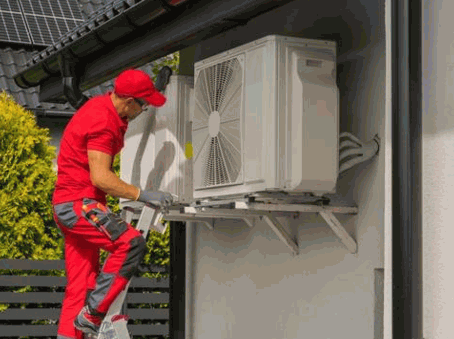Air source heat pumps and air conditioners are increasingly recognized as effective solutions for heating and cooling in both residential and commercial settings. This article examines the operational principles of air source heat pumps and air conditioners, including the refrigerant cycle and the process of heat transfer. It outlines the numerous advantages associated with their installation, such as enhanced energy efficiency and significant cost savings on energy bills, while also detailing the various types of heat pumps available in the market including geothermal systems. Additionally, the article addresses critical factors to consider when selecting a heat pump and provides comprehensive, step-by-step installation guidelines including tips from HVAC professionals. Ultimately, this innovative technology not only enhances indoor comfort but also contributes to environmental sustainability by reducing the carbon footprint.
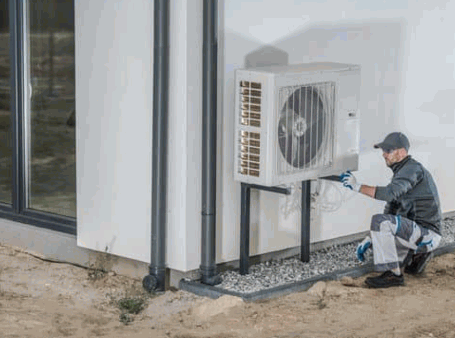
What Is An Air Source Heat Pump?
An Air Source Heat Pump (ASHP) is an energy-efficient system designed to transfer heat energy from the outdoor air for the purpose of heating or cooling indoor spaces, much like an air conditioner. This technology has gained popularity among residential properties in regions such as the UK and Canada, largely due to government grants and financial support for energy-efficient upgrades.
Unlike traditional heating systems that rely on fossil fuels such as natural gas or propane, ASHPs harness renewable energy from the air, resulting in a significant reduction in energy costs and a decrease in carbon emissions. This innovative HVAC solution integrates effectively with existing electrical systems, offering efficient heating and cooling options that can be customized to accommodate various heating preferences and insulation levels, thereby enhancing overall energy efficiency and potentially reducing installation costs.
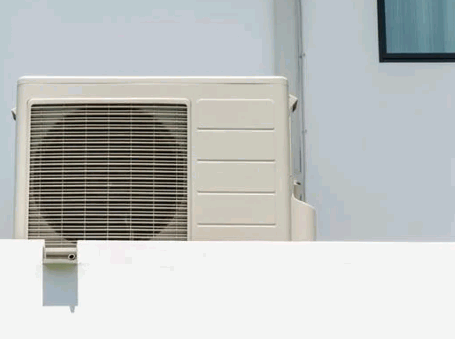
How Does An Air Source Heat Pump Work?
An Air Source Heat Pump functions by employing a refrigerant liquid that absorbs heat energy from the outdoor air, even in cooler conditions, and transfers it to an indoor unit for the purpose of heating or cooling indoor spaces, similar to a geothermal system.
The process commences with the outdoor unit drawing in ambient air, which circulates over coils containing the refrigerant. This interaction enables the refrigerant to absorb heat and transition into a gaseous state.
Subsequently, the gas is compressed to elevate its temperature before being directed to the indoor unit, where it relinquishes heat to warm the indoor environment. This cycle not only enhances energy efficiency but also reduces dependence on conventional heating systems and air conditioners.
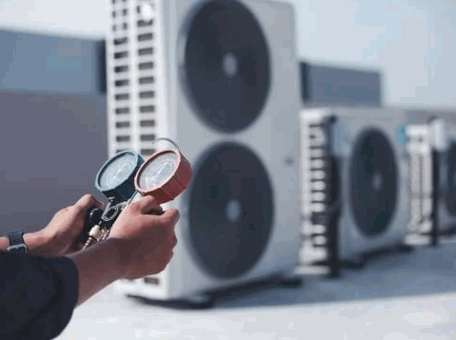
What Is The Refrigerant Cycle?
The refrigerant cycle serves as a fundamental component of an Air Source Heat Pump, facilitating the transfer of heat energy through a closed loop of refrigerant that undergoes phase changes to enable both heating and cooling processes. This cycle commences when the refrigerant, in a low-pressure liquid state, absorbs heat from the outdoor air within the evaporator coil, resulting in its evaporation into a gas.
Subsequently, this gas is compressed by the compressor, which increases its pressure and temperature, and then the gas circulates through the condenser coil indoors, where it releases heat into the indoor environment and reverts to a liquid state, thereby completing the cycle.
As the refrigerant enters the evaporator, it is characterized by low pressure and low temperature, typically ranging from 1 to 2 bar and -5 to 10 degrees Celsius. Proper site evaluation ensures the system works efficiently under these conditions. The heat absorbed from the external air causes the refrigerant to transition into a gaseous state, which is essential for initiating the cycle.
Once in gas form, the refrigerant experiences a significant increase in both pressure and temperature as it passes through the compressor, which operates at approximately 8 to 10 bar and can elevate the refrigerant’s temperature to levels exceeding 50 degrees Celsius. This high-pressure gas then enters the condenser, where it transfers heat into the indoor air, effectively raising the room temperature.
Upon releasing its heat, the refrigerant condenses back into a liquid state, resulting in a decrease in pressure, often returning to around 1 to 2 bar before flowing back to the evaporator, thus creating a continuous cycle.
- The compressor’s function is critical for achieving the necessary pressure for effective heat transfer.
- Efficient operation can optimize the temperature differential between the evaporator and outdoor air, thereby enhancing overall system efficiency.
- The equilibrium between the heat absorbed in the evaporator and the heat released in the condenser is a determining factor for energy consumption and performance.
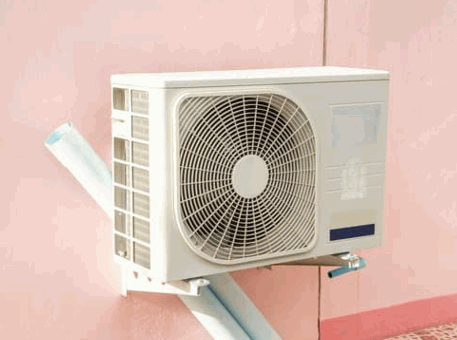
What Is The Heat Transfer Process?
The heat transfer process in an Air Source Heat Pump is essential to its operation, as it effectively moves heat energy from the outdoor unit to the indoor unit, thereby facilitating both heating and cooling functions, which is crucial for managing indoor space comfort.
During the heating cycle, the outdoor unit absorbs heat from the outdoor air, even at lower temperatures, due to the refrigerant’s ability to evaporate at low pressures. This absorbed heat is subsequently compressed and transferred to the indoor unit, where it is released to warm the indoor space. This process optimizes energy efficiency and maintains comfortable indoor temperatures by balancing the heating and cooling modes.
In the cooling mode, the dynamics of heat transfer are reversed. In this mode, the indoor unit absorbs heat from the indoor air, and the refrigerant transports this heat back to the outdoor unit, where it is expelled into the outdoor environment, enhancing the efficiency of the duct system. This process is crucial for sustaining a comfortable indoor atmosphere, particularly during hot summer months.
For instance, when the indoor temperature is 80°F and the outdoor temperature is 95°F, the heat pump’s efficiency allows for effective heat transfer due to the varying temperature differentials. Performance metrics, such as the coefficient of performance (COP), further demonstrate this efficiency; higher COP values indicate greater energy savings, establishing these systems as an environmentally friendly choice for residential installation.
Key points to consider include the following:
- The outdoor unit plays a pivotal role in the heat absorption and release process.
- Regular maintenance of both units is essential to sustain optimal heat transfer efficiency.
- A comprehensive understanding of these dynamics enables homeowners to make informed decisions regarding their heating and cooling needs while considering potential energy-saving improvements.
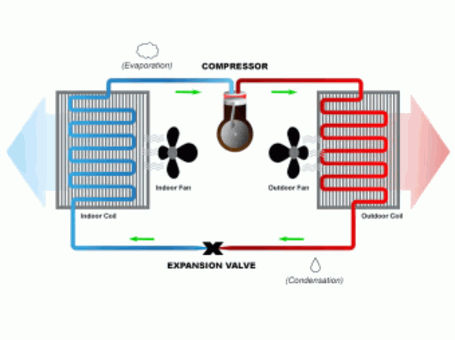
What Are The Benefits Of Installing An Air Source Heat Pump?
The installation of an Air Source Heat Pump presents numerous advantages, including improved energy efficiency, considerable cost savings on energy bills, and a minimized carbon footprint, rendering it an environmentally responsible option for residential heating and cooling applications.
This versatile system is capable of efficiently delivering both heating and cooling for indoor environments, adjusting smoothly to changing heating preferences and insulation levels throughout the seasons.
Furthermore, many homeowners have reported significant decreases in their energy consumption, resulting in long-term financial benefits and contributing positively to environmental sustainability, thanks to government incentives and financial support.
Energy Efficiency
Energy efficiency represents one of the most significant advantages of an Air Source Heat Pump. These systems are meticulously designed to optimize energy utilization while minimizing waste, resulting in decreased energy consumption and lower utility bills. By harnessing renewable energy sourced from outdoor air, the Air Source Heat Pump operates with higher efficiency ratings compared to traditional heating systems that depend on fossil fuels, making it an optimal choice for homeowners seeking sustainable heating solutions and noise level reduction.
To accurately assess the efficiency of these heat pumps, essential metrics such as the Seasonal Energy Efficiency Ratio (SEER) and the Heating Seasonal Performance Factor (HSPF) are employed, alongside customer reviews for practical insights. SEER evaluates cooling efficiency during warmer months, while HSPF focuses on heating efficiency throughout the entire heating season.
These ratios provide a clear indication of a heat pump’s performance and operational cost-effectiveness, which is vital information for both consumers and industry professionals.
Homeowners frequently benefit from various governmental incentives and financial assistance programs aimed at promoting energy-efficient upgrades, such as the Energy Company Obligation and the Boiler Upgrade Scheme. Such initiatives can significantly reduce the costs associated with the purchase and installation of Air Source Heat Pumps, thereby enhancing accessibility for a broader audience.
By investing in these improvements, households not only contribute to a more sustainable environment but also enjoy long-term savings on their energy bills.
- SEER – Evaluates cooling efficiency
- HSPF – Assesses heating performance
- Government incentives available for energy-efficient upgrades
- Long-term savings on energy consumption
Cost Savings On Energy Bills
Homeowners can anticipate significant cost savings on energy bills following the installation of an Air Source Heat Pump. This is largely attributable to its energy-efficient operation, which harnesses ambient heat from the outdoor air, thereby reducing reliance on electricity or gas for heating. With appropriate maintenance practices, including regular service and maintenance tips from HVAC professionals, these systems can function efficiently for many years, allowing homeowners to consistently enjoy lower energy costs and enhanced comfort levels.
Research indicates that households that install an Air Source Heat Pump can achieve average savings of 30% to 50% on heating expenses when compared to traditional heating methods. For example, a case study conducted in the UK and Canada revealed annual savings of up to £1,000 on energy bills for residences that transitioned from gas boilers to these advanced systems.
To ensure optimal performance and sustained savings, service maintenance by a qualified HVAC professional is crucial. This maintenance should include:
- Cleaning or replacing filters for air filtration
- Checking refrigerant levels
- Inspecting the outdoor unit for debris
By adhering to these maintenance practices, homeowners can extend the lifespan of their heating systems, ensuring ongoing savings and dependable comfort.
Look into: How Much Does An Air Source Heat Pump Cost
Environmentally Friendly
Air Source Heat Pumps are increasingly recognized as environmentally sustainable heating solutions due to their ability to harness renewable energy from the outdoor air. This approach results in a significantly reduced carbon footprint when compared to traditional heating systems that depend on fossil fuels like natural gas or propane. By utilizing a considerably lower amount of energy for both heating and cooling, these systems not only diminish greenhouse gas emissions but also advocate for the adoption of clean energy in residential settings.
The incorporation of Air Source Heat Pumps into residential properties represents a transformative strategy for addressing climate change. In contrast to conventional heating systems that emit harmful gases and consume substantial quantities of non-renewable resources, these heat pumps function based on the principle of heat transfer rather than heat generation through combustion. This operational method leads to a significant decrease in emissions, with research indicating that heat pumps can reduce overall carbon emissions by as much as 50% compared to traditional heating methods.
Key advantages include:
- Improved energy efficiency
- Lower operational costs
- Alignment with sustainability objectives
Furthermore, the capability to integrate these systems with solar panels or other renewable energy sources enhances their environmental advantages. This combination allows homeowners to further reduce their reliance on fossil fuels and substantially improve their property’s overall energy efficiency.
Versatile For Both Heating And Cooling
The versatility of an Air Source Heat Pump is one of its most appealing characteristics, as it can efficiently provide both heating and cooling for indoor environments, adapting to seasonal changes to ensure year-round comfort. This dual functionality enables homeowners to utilize a single system for various heating and cooling preferences, resulting in simplified installation processes and reduced overall costs associated with separate heating and cooling units.
In terms of operational modes, these systems typically function in either heating or cooling mode, utilizing a heat exchanger that reverses its operation based on the desired outcome. During the winter months, the pump extracts heat from the outside air and transfers it indoors for efficient indoor heating, while in the summer, it operates in reverse, absorbing heat from the interior and releasing it outdoors to cool the space.
Numerous satisfied customers have lauded the adaptability of their Air Source Heat Pumps, particularly noting the seamless transition between heating and cooling modes.
One homeowner’s review emphasized, “The system has made a noticeable difference in our home’s comfort level, effortlessly switching modes as the seasons change. No more fussing with multiple systems!”
Another user remarked, “It’s been incredibly efficient, and I appreciate the fact that I only need one unit for both heating and cooling needs.” This positive feedback illustrates the system’s effectiveness in addressing diverse climate demands.
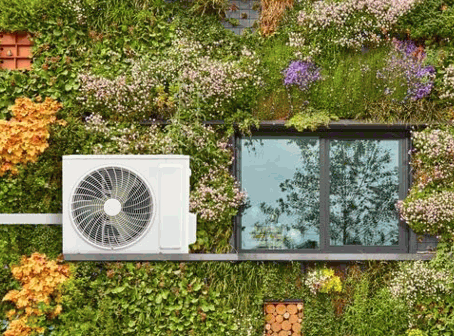
What Are The Different Types Of Air Source Heat Pumps?
There are various types of Air Source Heat Pumps available, each specifically engineered to address distinct heating and cooling requirements across different residential applications.
The most prevalent types include:
- Air-to-Air Heat Pumps, which distribute warm air throughout a building;
- Air-to-Water Heat Pumps, which supply hot water for domestic purposes and indoor heating needs;
- Hybrid Heat Pumps, integrate traditional heating systems with heat pump technology to enhance flexibility and efficiency.
Air-to-Air Heat Pumps
Air-to-Air Heat Pumps represent a favored option for residential heating systems due to their dual-component design, which comprises an outdoor unit that extracts heat from the air and an indoor unit responsible for circulating warm air throughout the living space. This type of heat pump is notably energy-efficient, making it an ideal choice for homeowners seeking to minimize energy consumption while ensuring comfortable indoor temperatures.
The efficiency of air-to-air heat pumps is particularly noteworthy when considering installation and maintenance aspects. Proper installation is essential, as it guarantees optimal performance and adherence to local energy efficiency standards. Homeowners are advised to consult with HVAC professionals to evaluate critical factors such as insulation, the design of the living space, and zoning, all of which can significantly impact the system’s overall effectiveness.
Customer reviews highlight the high performance of these systems; many users report satisfaction regarding temperature regulation and reduced utility costs.
For example:
- “I noticed a significant drop in my heating bill after installing the air-to-air heat pump!”
- “The even distribution of warmth throughout my home is impressive!”
With ongoing advancements in technology, these systems continue to enhance their efficiency, establishing themselves as an excellent long-term investment.
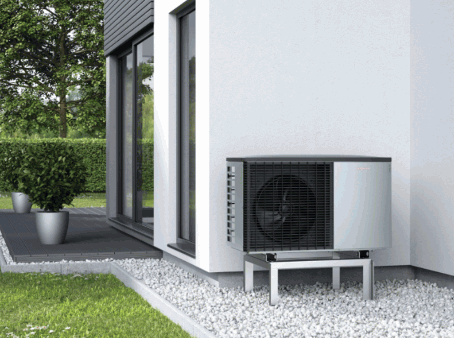
Air-to-Water Heat Pumps
Air-to-Water Heat Pumps are specifically engineered to provide hot water for domestic use while also delivering efficient heating solutions for residential properties. This type of heat pump extracts heat from the outdoor air and transfers it to water, which can subsequently be utilized for space heating or hot water systems. This versatility makes them an attractive option for homeowners aiming to enhance energy efficiency.
Given their ability to operate effectively even in low outdoor temperatures, these systems are well-suited for a variety of climatic conditions, ensuring consistent performance throughout the year, including during colder months. Such adaptability renders them a compelling choice for households seeking both comfort and sustainability.
The benefits of air-to-water heat pumps extend beyond the provision of heating and hot water. Some noteworthy advantages include:
- Energy Efficiency: By harnessing renewable energy from the air, these systems can significantly reduce energy consumption and lower utility bills.
- Environmentally Friendly: They contribute to a reduction in greenhouse gas emissions when compared to traditional heating methods, thereby supporting a more sustainable environment.
- Versatile Applications: Along with heating, they can effectively supply hot water for showers, kitchen use, and even swimming pools.
The installation process typically involves positioning the outdoor unit in an appropriate location and connecting it to the indoor heating or hot water system. Often, professional assistance is recommended to ensure optimal performance. This integration of heating needs can be further enhanced with smart technologies like remote access, voice control, and smart speaker compatibility with platforms such as Google Assistant and Alexa.
Regarding financial support, various government grants and incentives like the Boiler Upgrade Scheme and Energy Company Obligation are available to promote the installation of renewable energy systems, making them more accessible to homeowners. It is advisable to consult local regulations and financial aid options to maximize savings when investing in an air-to-water heat pump.
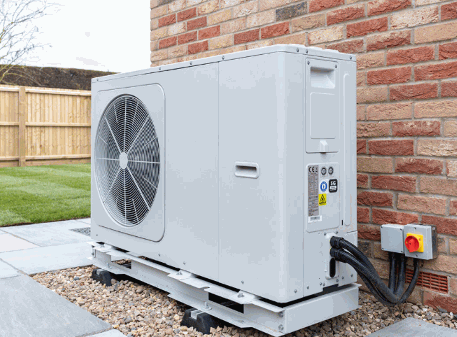
Hybrid Heat Pumps
Hybrid Heat Pumps integrate the advantages of traditional heating systems with the efficiency of Air Source Heat Pumps, providing a versatile solution that adapts to variations in outdoor temperatures and energy prices. This type of heat pump has the capability to transition between utilizing a conventional boiler and the heat pump, thereby maximizing energy efficiency and ensuring optimal comfort for homeowners throughout the year.
Hybrid Heat Pumps are engineered to function efficiently across diverse climates, employing advanced technology to monitor and respond to both environmental conditions and market fluctuations. By facilitating seamless transitions between energy sources, these systems can significantly decrease dependence on fossil fuels, ultimately resulting in substantial savings on energy bills when compared to standard heating systems. Although the initial installation costs may be higher than those of conventional options, the long-term advantages—such as reduced operating expenses and an improved environmental footprint—often substantially surpass the upfront investments.
- Adaptable to varying energy prices and influenced by natural gas and propane costs
- Utilizes smart technology for optimal performance, including remote access via mobile devices.
- Environmentally friendly heating solutions
Consequently, homeowners can achieve enhanced energy efficiency while experiencing increased comfort throughout the year.
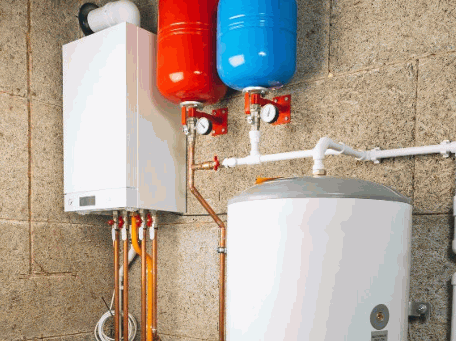
What Factors Should Be Considered When Choosing An Air Source Heat Pump?
When selecting an Air Source Heat Pump, several factors should be considered to ensure it meets your specific heating needs and is compatible with your residential property. These factors include:
- Installation process: Consider the outdoor space available and plan the installation timeline accordingly.
- Heating modes: Evaluate the system’s capability to switch efficiently between heating and cooling modes.
- HVAC professional consultation: Engage with a professional to assess potential air leaks and insulation requirements.
- Integration with technology: Explore options for smart controls like remote access and voice control through smart speakers such as Google Assistant and Alexa.
When selecting an Air Source Heat Pump, it is essential to consider several critical factors to ensure optimal performance and satisfaction. These factors include climate and weather conditions, energy efficiency ratings, the size and layout of the property, and noise levels.
A thorough understanding of these elements will enable homeowners to make informed decisions that align with their heating requirements and preferences while ensuring compliance with relevant regulations and maximizing energy savings.
Climate And Weather Conditions
Climate and weather conditions significantly influence the performance of Air Source Heat Pumps, as these systems are engineered to extract heat from the outdoor air, making their efficiency largely contingent on outdoor temperatures. In regions characterized by milder climates, Air Source Heat Pumps can sustain exceptional efficiency throughout the year; conversely, in colder climates, their effectiveness may diminish during periods of extreme temperatures.
When selecting an Air Source Heat Pump, it is imperative to understand the local climate, as it profoundly affects both the performance and longevity of the system. Various models are specifically rated for different temperature ranges, ensuring optimal functionality even during the coldest months. For example, certain heat pumps may exhibit reduced effectiveness at temperatures below 20°F (-6°C), which can result in increased energy consumption and diminished comfort levels.
- Heat pumps equipped with advanced technology can operate efficiently in temperatures as low as -5°F (-20°C).
- In contrast, standard models may require auxiliary heating systems, which can elevate both installation and operational costs.
Consequently, homeowners should thoroughly assess the operational limits of heat pumps and consider selecting units designed to perform effectively in frigid climates to maximize efficiency throughout the heating season.
Size And Layout Of Property
The size and layout of a property are critical factors to consider when selecting an Air Source Heat Pump, as an appropriately sized system is essential for optimal heating and cooling performance in both indoor and outdoor environments. An undersized unit may be unable to satisfy heating demands, while an oversized system can lead to inefficiencies and uneven temperature distribution.
Proper sizing is not solely determined by square footage; it also depends on insulation levels and individual heating preferences. Homeowners should conduct a comprehensive site evaluation, taking into account the following factors:
- Square Footage: Measure the total area to be conditioned, considering elements such as high ceilings or open floor plans.
- Insulation Levels: Evaluate the existing insulation in walls, attics, and floors, as this will significantly impact heating efficiency.
- Heating Preferences: Identify the desired indoor temperatures and seasonal usage patterns.
It is advisable to consult with a professional who can account for local climate conditions and specific property characteristics, ensuring that the selected unit fulfills all performance expectations efficiently.
Energy Efficiency Ratings
Energy efficiency ratings are essential metrics that enable homeowners to evaluate the performance of an Air Source Heat Pump. Two critical indicators in this assessment are the Seasonal Energy Efficiency Ratio (SEER) and the Heating Seasonal Performance Factor (HSPF). High ratings in these categories indicate systems that consume less energy while delivering optimal heating and cooling, resulting in reduced energy expenditures.
A thorough understanding of these ratings is imperative for making informed decisions when investing in a new heating and cooling system. Systems with elevated SEER ratings demonstrate more efficient electricity usage during cooling seasons, which can significantly influence overall energy consumption. Similarly, a higher HSPF signifies improved efficiency in heating, especially during colder months.
Homeowners should prioritize the selection of units with superior performance metrics, as the implications of these ratings extend beyond immediate comfort and convenience.
- Consider the long-term cost-effectiveness of energy-efficient upgrades.
- Investing in systems with high ratings can lead to considerable savings on utility bills over time.
- Certain regions may offer rebates or incentives for high-efficiency installations, thereby making the initial investment more manageable.
Ultimately, by accurately interpreting SEER and HSPF ratings, individuals can ensure they are maximizing comfort while also making economically sound choices for their households.
Noise Levels
Noise levels produced by an Air Source Heat Pump are a critical consideration, particularly in residential installations, where excessive noise can disrupt both indoor environments and outdoor spaces. While most modern heat pumps are engineered to operate quietly, it is imperative for homeowners to assess noise ratings and customer reviews to ensure they select a system that delivers a comfortable experience without disruptive sounds.
Understanding noise levels entails examining the measurement of decibels (dB), which indicate sound intensity. This measurement scale is particularly relevant for residential heat pumps, as it assists in identifying units that operate quietly during functioning. By choosing low-noise models, homeowners can enhance their comfort without sacrificing efficiency.
Technological advancements have facilitated the development of innovative designs that significantly reduce operational noise. For example, units equipped with variable-speed compressors and enhanced insulation materials are designed to deliver quieter performance.
- Customer feedback often underscores the tranquility achieved with these modern systems.
- Service reviews frequently highlight the necessity of selecting a unit with a strong reputation for minimal disturbance.
In conclusion, selecting the appropriate heat pump not only contributes to a serene home environment but also provides peace of mind for homeowners.
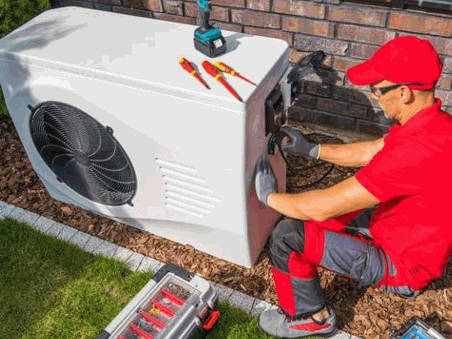
How To Install An Air Source Heat Pump?
The installation of an Air Source Heat Pump entails a systematic process that necessitates meticulous planning and execution to achieve optimal performance and efficiency.
The process begins with a comprehensive site evaluation to identify the most suitable location for the outdoor unit. Subsequently, the indoor unit and any necessary ductwork are installed. It is imperative to establish proper connections between the refrigerant lines and electrical systems.
Finally, thorough testing of the unit is conducted to confirm its effective operation.
Choose The Right Location For The Outdoor Unit
Selecting an appropriate location for the outdoor unit of an Air Source Heat Pump is essential for ensuring optimal performance and maximizing energy efficiency. Important factors to consider include the proximity to the indoor unit, accessibility for maintenance purposes, exposure to sunlight, and potential obstructions from trees or structures that may hinder airflow.
Along with these considerations, it is crucial to evaluate the local environment, including typical wind patterns and the proximity to any noise-sensitive areas, such as bedrooms or patios.
- It is vital that airflow remains unobstructed to enable the unit to operate at peak efficiency, as insufficient circulation can lead to reduced effectiveness.
- The noise levels produced by the unit should be carefully considered to avoid disturbing the tranquility of outdoor living spaces.
- Additionally, the visual impact of the installation should not be overlooked, ensuring that it integrates seamlessly with the overall aesthetics of the property.
Conducting a comprehensive site evaluation not only assists in identifying the most suitable location but also mitigates the risk of complications during installation, thereby enhancing the overall longevity and effectiveness of the system.
Install The Indoor Unit And Ductwork
The installation of the indoor unit and ductwork represents a critical phase in the implementation of an Air Source Heat Pump, as these elements are responsible for the effective distribution of warm or cool air throughout the interior space. Ensuring the proper placement of the indoor unit, along with a well-designed ductwork system, is essential for achieving optimal airflow and temperature control, thereby enhancing the overall effectiveness of the system.
By selecting an appropriate location for the indoor unit, homeowners can significantly influence the performance of their heating and cooling systems. This selection process requires careful consideration of various factors, including room size, height, and any existing obstacles that may impede airflow. Optimizing airflow is vital, as it not only improves system efficiency but also contributes to a consistent and comfortable indoor climate.
- Positioning the indoor unit in a central location within the residential property can facilitate the most effective air distribution, thereby reducing the occurrence of cold or hot spots.
- Avoiding installation near obstructions such as furniture or walls is crucial to maintaining unobstructed airflow, which is essential for optimizing energy efficiency.
- During the installation of ductwork, it is essential to minimize bends and turns to ensure smooth and efficient air travel.
Collectively, these practices significantly influence the overall energy efficiency of the air source heat pump system and greatly enhance household comfort.
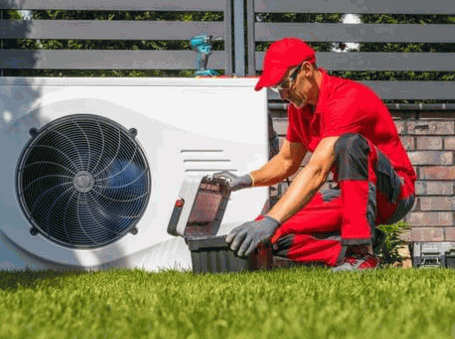
Connect The Refrigerant Lines
Connecting the refrigerant lines during the installation of an air source heat pump is a critical task that must be performed accurately to ensure system efficiency and longevity. These lines facilitate the transfer of refrigerant between the indoor and outdoor units, and improper connections can result in leaks, diminished performance, and increased energy costs. Consulting with an HVAC professional is advisable to ensure the best practices are followed.
In undertaking this essential step, it is imperative to prioritize the selection of materials. Choosing appropriate tools and components not only enhances durability but also adheres to industry standards that uphold system integrity. For instance, using insulated copper tubing is often recommended, as it minimizes heat loss and optimizes overall functionality. It is essential to ensure that the fittings are compatible with the specific refrigerant type being utilized, such as those used in geothermal or air-source heat pumps.
Consider the following guidelines when connecting the lines:
- Before proceeding, inspect the tubing for any debris or obstructions.
- Ensure that the joints are tight when making connections, but avoid overtightening, as this may damage the components.
- Utilize appropriate torque specifications to secure the joints effectively.
After the installation, it is advisable to conduct a pressure test to verify that no leaks are present, thereby safeguarding both performance and efficiency. This step is particularly important in ensuring compliance with programs like the Boiler Upgrade Scheme and the Energy Company Obligation.
Test And Commission The System
Testing and commissioning the air source heat pump upon installation is a critical process to ensure that the system operates efficiently and meets established performance standards. This final step entails verifying refrigerant levels, confirming electrical connections, and operating the system to ensure it effectively heats or cools the indoor environment as intended. Integrating such systems with smart home devices like Google Assistant or Alexa can further enhance operational efficiency.
During the commissioning phase, technicians must perform several essential evaluations that are integral to the system’s overall functionality. They should:
- Inspect the installation location to confirm adequate airflow and accessibility.
- Measure the temperature differential to ensure the unit operates within acceptable limits.
- Test safety devices and functionality to mitigate any potential hazards.
Along with initial testing, the significance of ongoing service maintenance and routine inspections cannot be overstated; these practices are essential for ensuring long-term performance and efficiency.
Neglecting routine inspections may result in increased energy consumption and premature wear on components, making it imperative to establish a maintenance schedule to monitor and address any issues that may arise.
